After several marketing/economic-focused tutorials it feels good to get back to a post about writing craft. In previous tutorials I’ve talked about pitching and scripting. This time I want to specifically focus on how I write action scenes.
Most of the comic writing I’m known for at this early point in my career have big action at their core: Skullkickers, Street Fighter and Pathfinder (also, apparently, a lot of books with “er” in the title). I like the momentum and intensity a good action scene can add to a story and enjoy brainstorming new and amusing combat scenarios.
Before I start scripting I’ll do some “battle brainstorming” to come up with inventive and entertaining action possibilities. It’s easy to fall into a rut with characters mindlessly throwing punches and announcing themselves with big speeches so this idea generation phase helps me break free of the most obvious and boring combat options. This is comics, not prose, so I want to make sure I give readers something both visually entertaining and character appropriate.
WHO is fighting?
• What are the characters’ capabilities (physical, mental, unusual powers)?
• How can they be used visually?
• What kind of training do the characters have?
• How does their training and abilities affect the way they perceive combat?
• Is there anything new we can/should reveal about them in this battle?
WHERE is this fight happening?
• Is the location primarily interior or exterior?
• Can the location be used as part of the battle to aid/hinder the characters?
• Is it clear where everyone is in the fight?
• Is it visually interesting?
• Does weather, visibility or time of day factor into this scene?
• Can we move locations/alter the environment during the battle?
• Is reference required for the artist?
WHEN in the story is the fight happening?
• What attitude do the characters have towards this fight?
• How seriously are they taking it?
• What is at stake if they lose?
• What will they gain if they win?
WHAT’s the result?
• How should the reader feel when the fight is over?
• Is there a clear winner/loser to this combat?
• Was it a “fair” fight? If not, why not?
• Does the loser escape?
• Will anyone need to recover after this battle?
• Is any of it too obvious/expected/repetitive?
Most of these questions will be self evident but they can help generate new ideas and change up a battle from the norm. Even if the reader has seen these characters duke it out a dozen times before, changing why they’re fighting, what‘s at stake or where it’s taking place can generate new momentum and entertainment.
Fight scenes, just like the plot itself, have to build up intensity. At the start of a story arc conflict will usually be straight forward and then, with each new chapter or battle, things tend to grow more difficult with bigger challenges and more surprises. This can be reflected in what’s at stake, how long the fights are and visually impressive ways a fight can play out. Each story has its own challenges and changes, but starting with a bit of structure like this can help if you’re struggling to raise the stakes along the way.
When scripting the Street Fighter Legends: Ibuki mini-series for UDON I actually counted how many pages I used for action in each issue, adding more combat with each one to increase the intensity in the series as it progressed. I do this with each arc of Skullkickers as well, usually brainstorming big combat “set pieces” for each arc first and then working my way backwards to logically build up to them in the story.
Street Fighter Legends: Ibuki mini-series
Issue #1: 8 pages of action, mostly fun combat without much at stake.
Issue #2: 9 pages of action, building up intensity.
Issue #3: 10 pages of action. Bigger action and serious threats.
Issue #4: 14 pages of action. The biggest threats and big wrap up of all the main plotlines.
Skullkickers first story arc
Issue #1: 10 pages of action with little at stake.
Issue #2: 11 pages of action. A bit more dangerous/difficult.
Issue #3: 8 pages of action. Developing plot and building up the big threat.
Issue #4: 12 pages of action. Much more at stake and things look grim for the protagonists.
Issue #5: 15 pages of action. The biggest visual moments of the arc and the big payoff.
I find that this “action-first” approach to storytelling works well for series like Street Fighter or Skullkickers. I do the same thing with character moments/emotions in Makeshift Miracle, using that element of the story as the core and building the rest around it. When people describe Skullkickers “action/adventure” is what stands out most about the series. In Makeshift Miracle it’s “drama/emotion”. With both series that’s built into my writing structure by design.
Major actions can be broken down into 3 parts: anticipation, action, and reaction. When scripting action scenes I imagine the key ‘snapshot’ moments that tell the reader the most important elements. I suggest small panels to set up attacks and larger panels to pay off the outcome, saving full page shots or double page spreads for the biggest and most epic moments.
I tend to keep dialogue to a minimum when combat begins. Logically people can’t say a lot when fists start flying anyways, but it also reflects the brisk reading pace I want to maintain in the action scene. Big chunks of text tend to make a fight seem slower and less energetic. If I need characters to say a bunch of stuff as they fight I’ll stretch that dialogue/interaction out over multiple panels so we keep momentum rolling. They get to say their speech but the combatants aren’t standing still while it happens.
I try to avoid “Character A punches Character B in the face” kind of stuff. Even a simple punch can be more visually interesting if you target different parts of the body. A punch in the stomach, kidneys, throat, ear, knee or anywhere else will stand out a bit more. That doesn’t even take into account characters missing, narrowly deflecting blows, or other things happening around them at the same time. Keep it interesting and it’ll excite the artist and reader a lot more.
Here are a couple pages of action from issue #16 of Skullkickers showing my script and then the amazing finished artwork by line artist Edwin Huang and colorists Misty Coats and Ross A. Campbell…
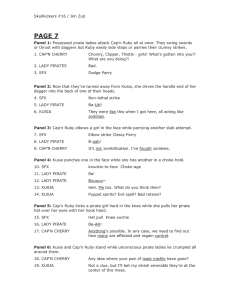
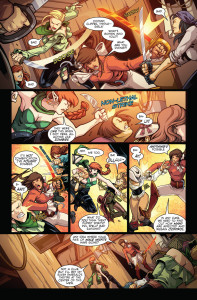
Visual storytelling in comics lends itself well to action and athletic derring-do. Use combat to show what characters are capable of and advance the plot at the same time. The more thought and care you put into your action scenes, the better the “fight choreography” will be, generating more excitement and entertainment for your readers.
I hope you’ve found these comic writing ramblings useful. As I stated in earlier posts, this isn’t any kind of absolute-must-follow method, just the way I work and a few tips. If you find these posts helpful, feel free to let me know here (or on Twitter), share them with your friends and consider buying some of my comics or donating to my Patreon to show your support.

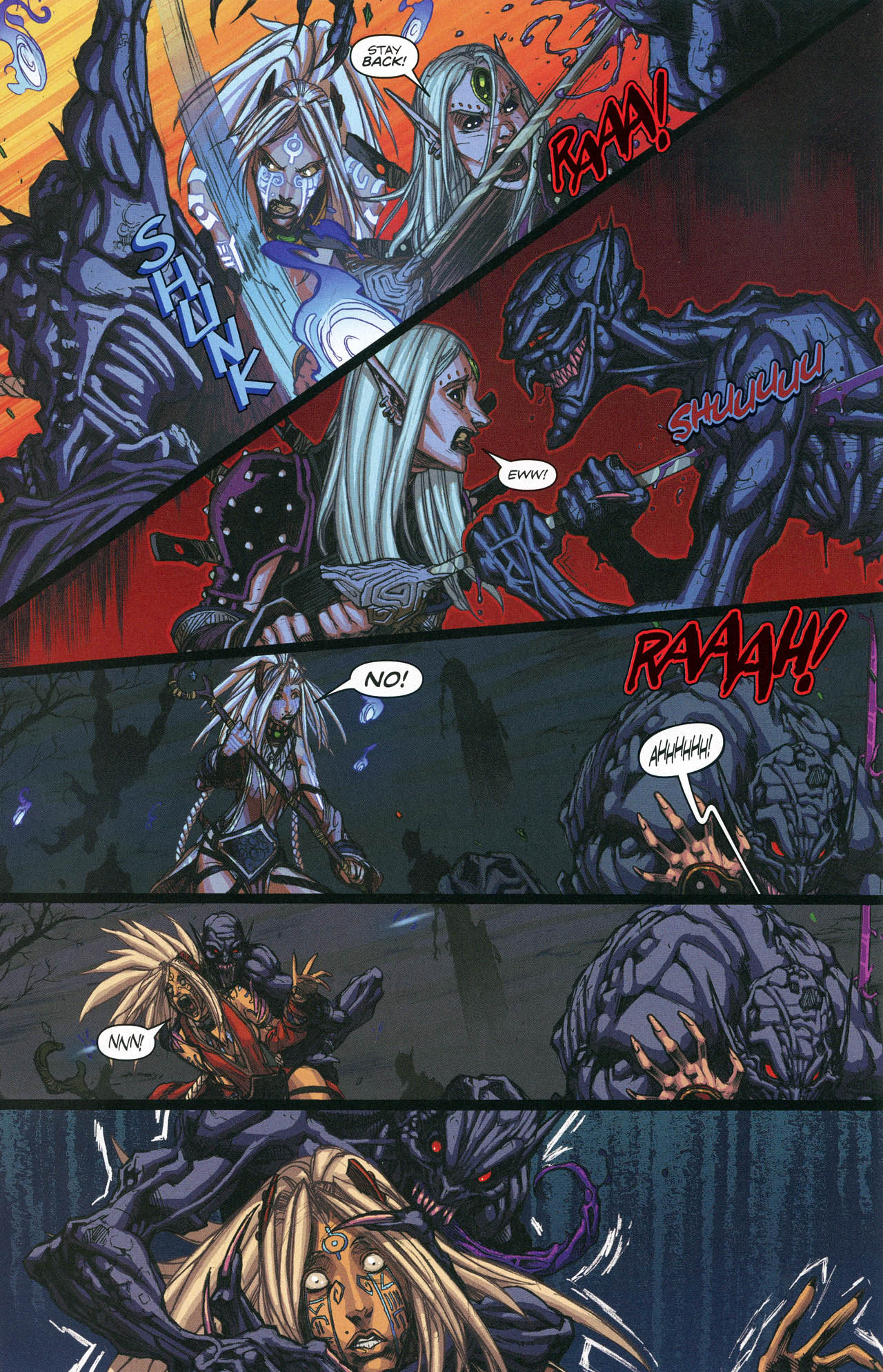
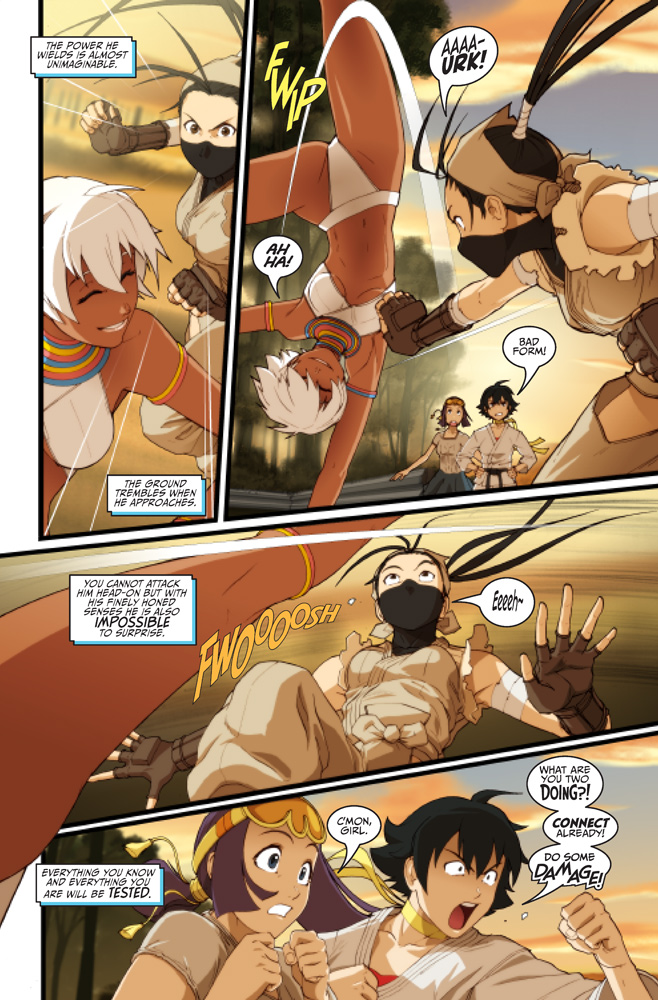
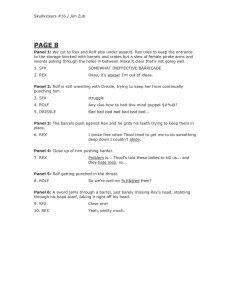
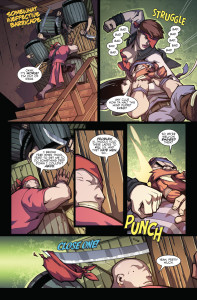
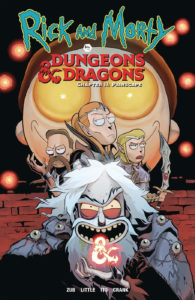



 Zub on Amazon
Zub on Amazon Zub on Instagram
Zub on Instagram Zub on Twitter
Zub on Twitter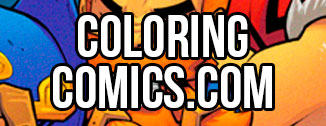
Another good one, Jim, thanx a lot. I intend to create my newest comic with your ideas and suggestions in mind (see the list of tutorials in the top right corner of this page). I ´ll gladly let you know if it turned out well.
Such action detail is not limited to fighting but to other forms of action as well, an illegal street race through the mountains, a sports event, etc. without direct combat also can follow the same sequences. Even then characters will have different skills. A skilled racer will have more control over their vehicle than the average driver at high speeds, etc.